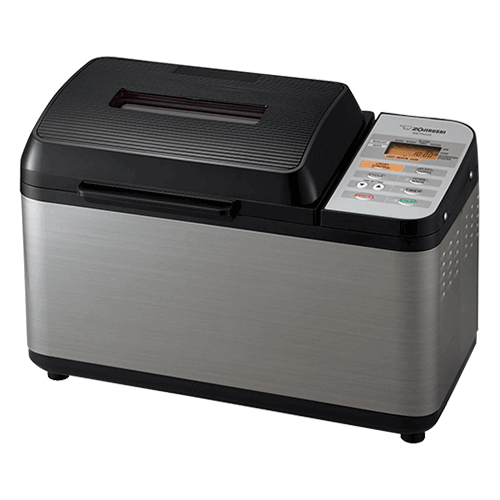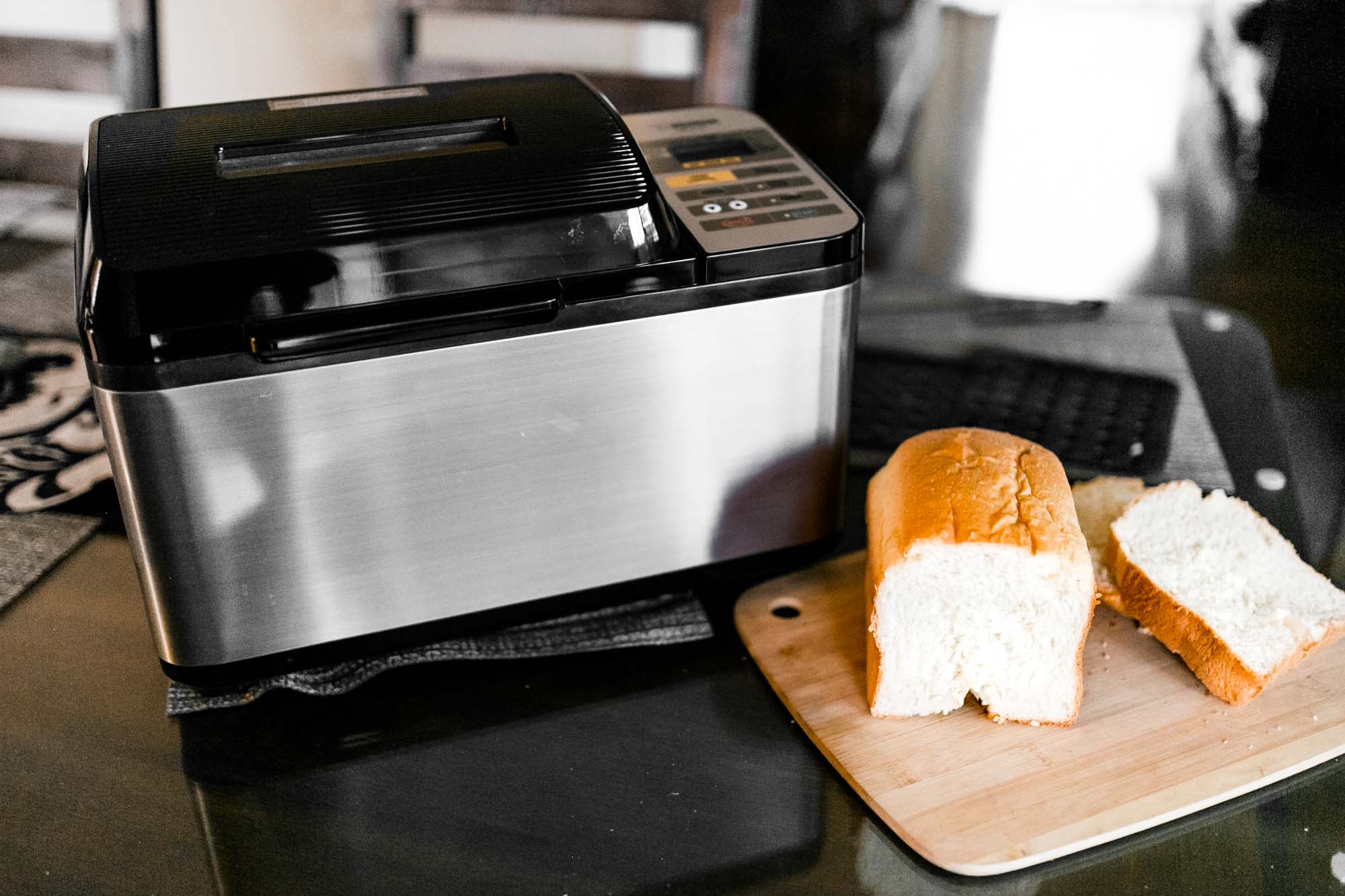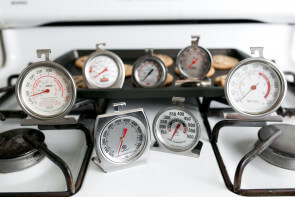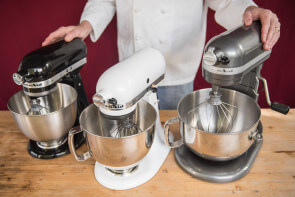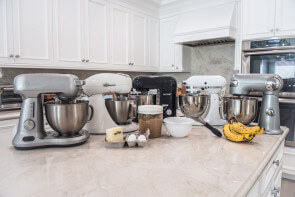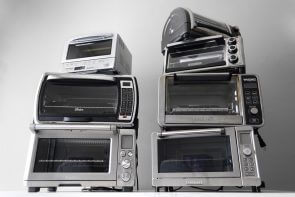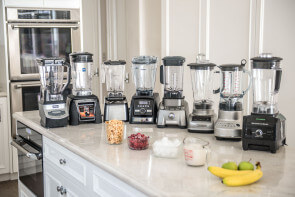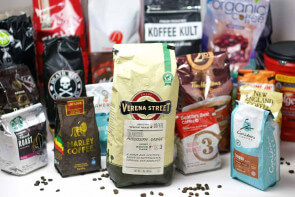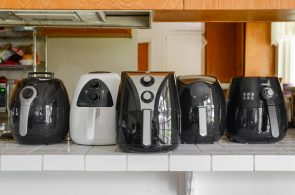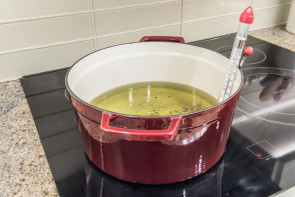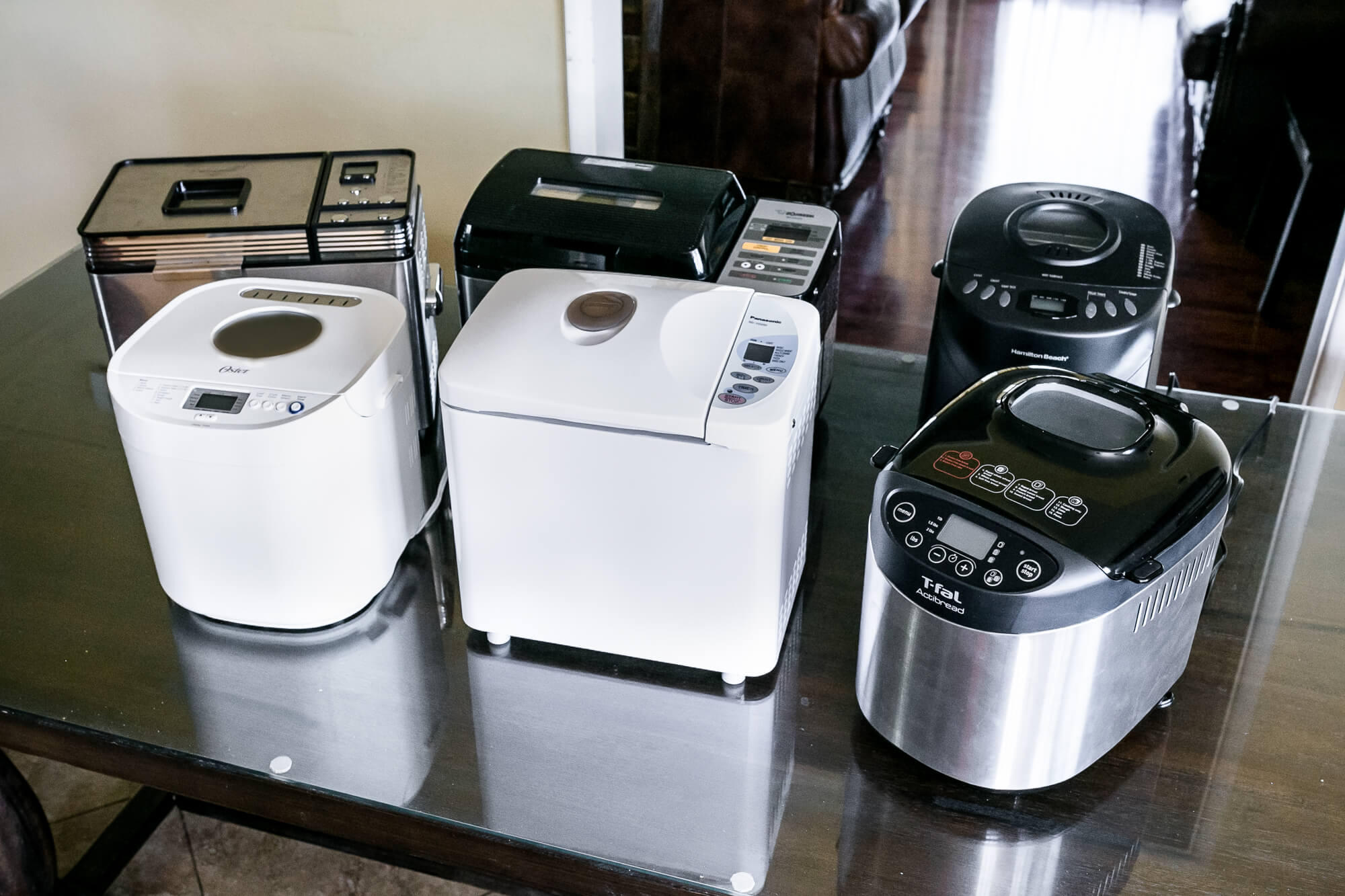
The Best Bread Machines
We spent 36 hours researching and testing to determine which bread machine bakes the best bread. After weeks of baking follies, foibles and triumphs, the tried and true Zojirushi – BB-PAC20 earned our pick for best bread machine. While it is the most expensive machine in our lineup, this machine is solid, consistent and offers advanced features that take automatic bread-baking over the top. At a quarter of the cost of a Zojirushi, our runner-up Oster – CKSTBRTW20 offers many of the same features packed into a smaller, lighter and friendlier package. Used by novices and experts alike, we learned how these handy appliances make breadmaking easy and enjoyable.
We spent 36 hours researching and testing to determine which bread machine bakes the best bread. After weeks of baking follies, foibles and triumphs, the tried and true Zojirushi – BB-PAC20 earned our pick for best bread machine. While it is the most expensive machine in our lineup, this machine is solid, consistent and offers advanced features that take automatic bread-baking over the top. At a quarter of the cost of a Zojirushi, our runner-up Oster – CKSTBRTW20 offers many of the same features packed into a smaller, lighter and friendlier package. Used by novices and experts alike, we learned how these handy appliances make breadmaking easy and enjoyable.
Table of contents
- How we selected finalists to test
- Compare the best bread machines
- The history of bread machines
- Why use bread machines?
- Important features to consider
- How do bread machines work?
- How we tested
- Best overall: Zojirushi – BB-PAC20
- Cost-effective pick: Oster – CKSTBRTW20
- Other finalists we tested
- The bottom line
How we selected finalists to test
Every YBD article starts with extensive online research. That means we spend a lot of time on subreddits like /r/Breadit and reading blogs specializing in bread. We scanned websites like Amazon, Target and Walmart to find useful intel within casual user reviews. A little more digging took us deeper into niche communities like /r/Frugal, /r/homestead and /r/ketorecipes for recommendations off the beaten path.
Like the microwave and waffle machine, the bread machine has inspired many dedicated cookbooks. Our research includes a couple of titles that offer in-depth studies such as The Bread Lover’s Bread Machine Cookbook and Easy Breadmaking for Special Diets. Professionally-trained baker and author of the former, Beth Hensperger gives us an expert’s perspective in her writing. In her book, there’s an exhaustive chapter dedicated to describing the many features of bread machines, providing a decent starting point for home baking.
YouTube reviews provided a sometimes-entertaining source of bread machine reviews and tips, both professional and amateur. Seeing reactions and answers to common issues from home bakers helped us determine which features were important. We factored in these notes with the general list of available bread machines to narrow down the finalists.
What we ended up with was a diverse list of high-end, inexpensive and unique bread machines qualified by our multi-point vetting process.
Compare the best bread machines
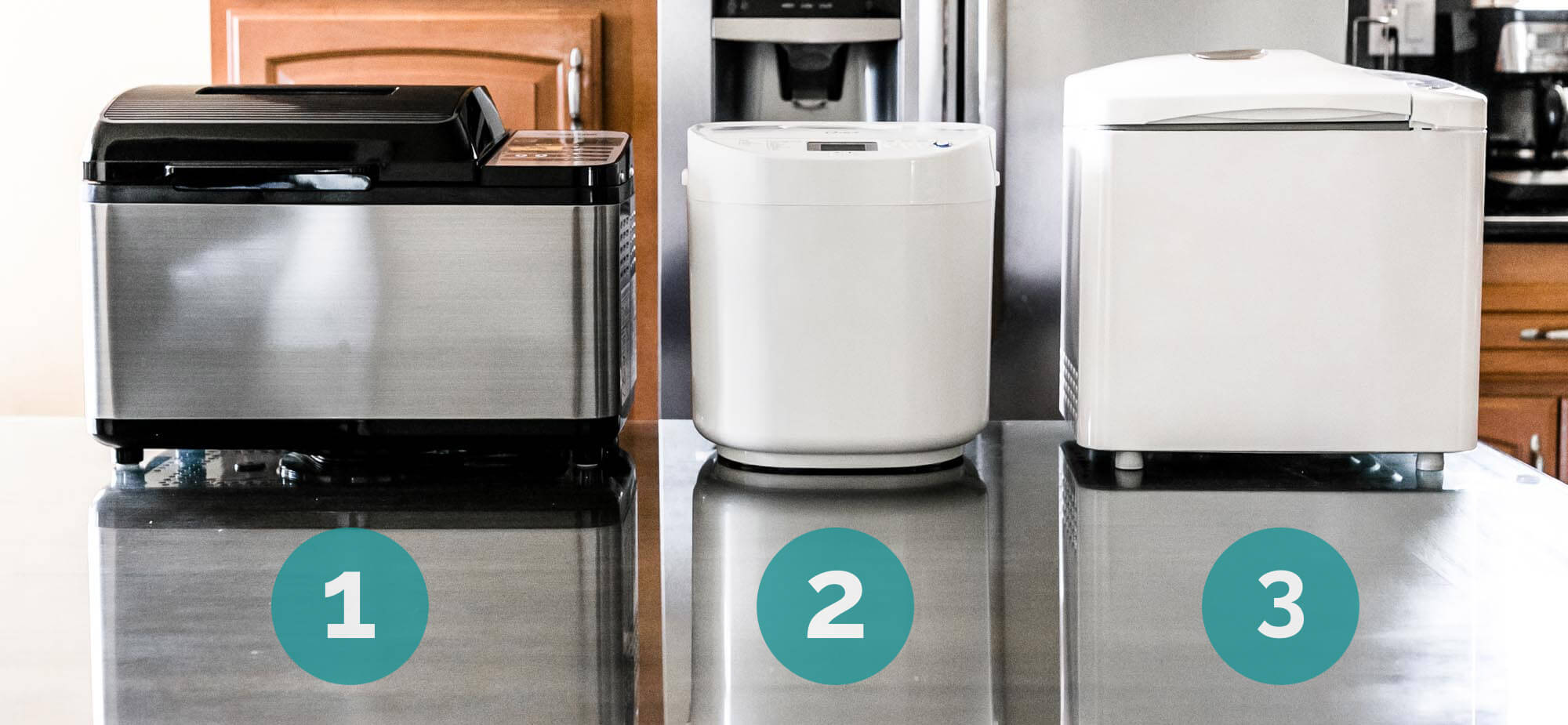
| Product | Price | Capacity | View Window | Warranty |
|---|---|---|---|---|
| 1. Zojirushi - BB-PAC20 | $$$$$ | 2.0 lb | Yes | 1 year |
| 2. Oster - CKSTBRTW20 | $ | 2.0 lb | Yes | 1 year |
| 3. Panasonic - SD-YD250 | $$$$ | 2.0 lb | Yes | 3 years |
| 4. Cuisinart - BMKR-400PC | $$$$ | 2.5 lb | No | 1 year |
| 5. T-fal - PF311E ActiBread | $$$ | 2.0 lb | Yes | 1 year |
| 6. Hamilton Beach - 29882 | $$ | 2.0 lb | Yes | 1 year |
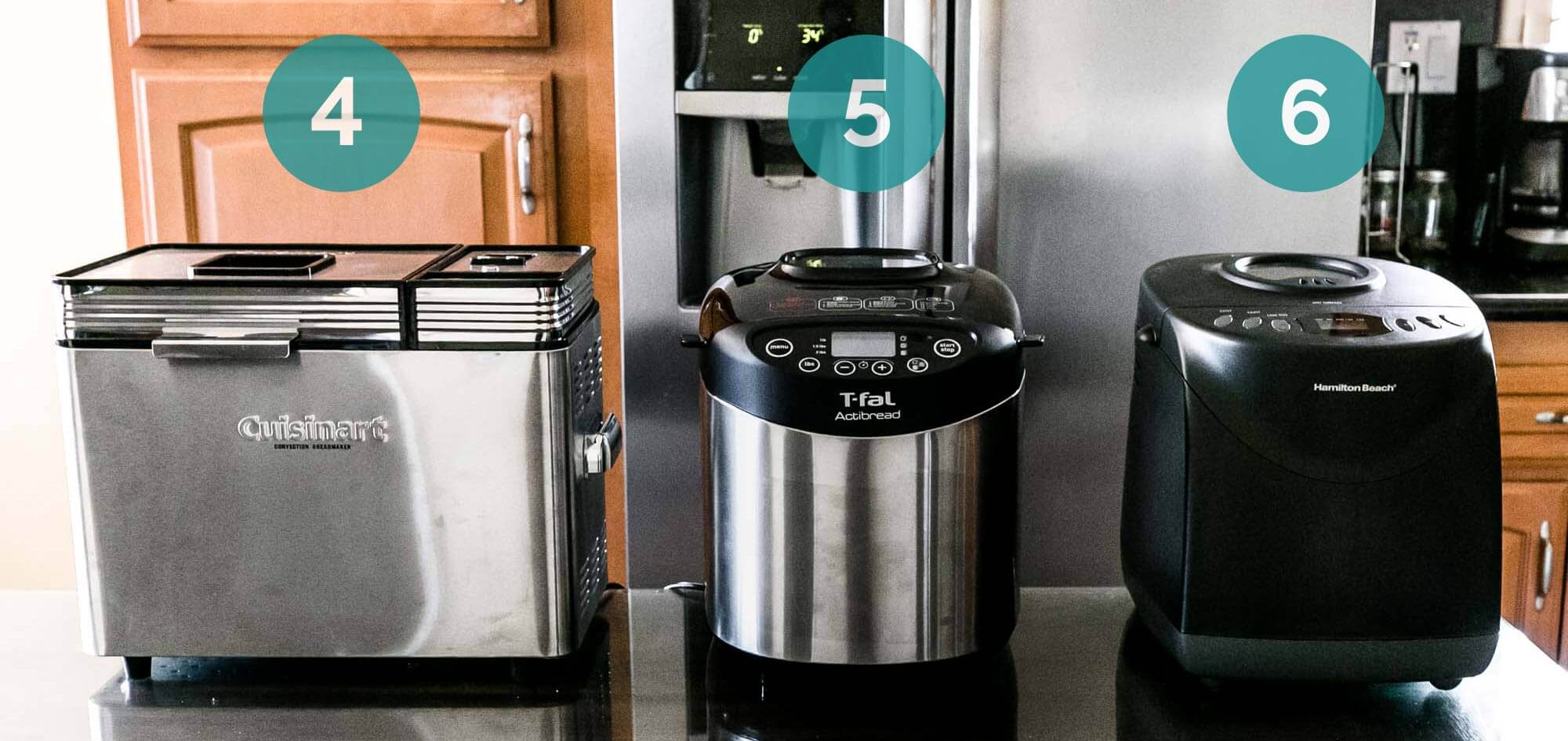
The history of bread machines
While breadmaking dates back a staggering 30,000 years, the single-loaf home bread machine has only existed since 1986, the year it was invented in Japan. That makes for about 29,968 years of laborious bread making sans machine. Two years later, it hit American stores in 1988 with a retail cost hovering around $300 each! By 1996, annual sales of bread machines zoomed up to $400 million! These newly-minted home appliances have enjoyed a comfortable spot on wedding registry wishlists ever since.
Why use bread machines?
The basic process for bread making starts with mixing flour, salt and yeast, followed by laborious kneading, rising, more kneading, shaping, rising again and finally baking. In total, it is a long and arduous process that takes at least two to four hours depending on the type of bread. The length of time to use a bread machine is about the same, but the bread machine mechanizes the tiring work of kneading and timing.
We’ll come right out and say that bread machines may not be as foolproof as you expect. Depending on how carefully you read instructions, there’s a good chance you might nail it on the first try. But it’s important to remember that there is a craft and science to bread baking. That being said, bread machines undoubtedly increase your chances of success.
Bread making can be sensitive and reactive to your environment, so proportions of wet and dry ingredients can vary by the season. Fresh ingredients (especially yeast) and proper measuring are crucial to bread machine success. While it is a simple formula, it may take some tinkering and learning to achieve that perfect loaf.
Experienced bread makers have familiarized themselves with the proper look and texture of a successful dough; some able to bake without measuring, relying on feel alone! If you’re a little bit curious, adventurous and willing to learn, bread machine baking is a great way to learn about this ancient staple and the fascinating chemistry behind it.
All the hard work
What the bread machine does best is take over the labor of kneading. The machine also automatically brings itself to ideal proofing temperature, which makes consistent results easier. With or without a bread machine, home bakers must be cognizant of temperature and humidity, which can affect the consistency of the dough. With the bread machine however, you can pretty much let it go after ensuring the dough is the right consistency in the first 10 minutes.
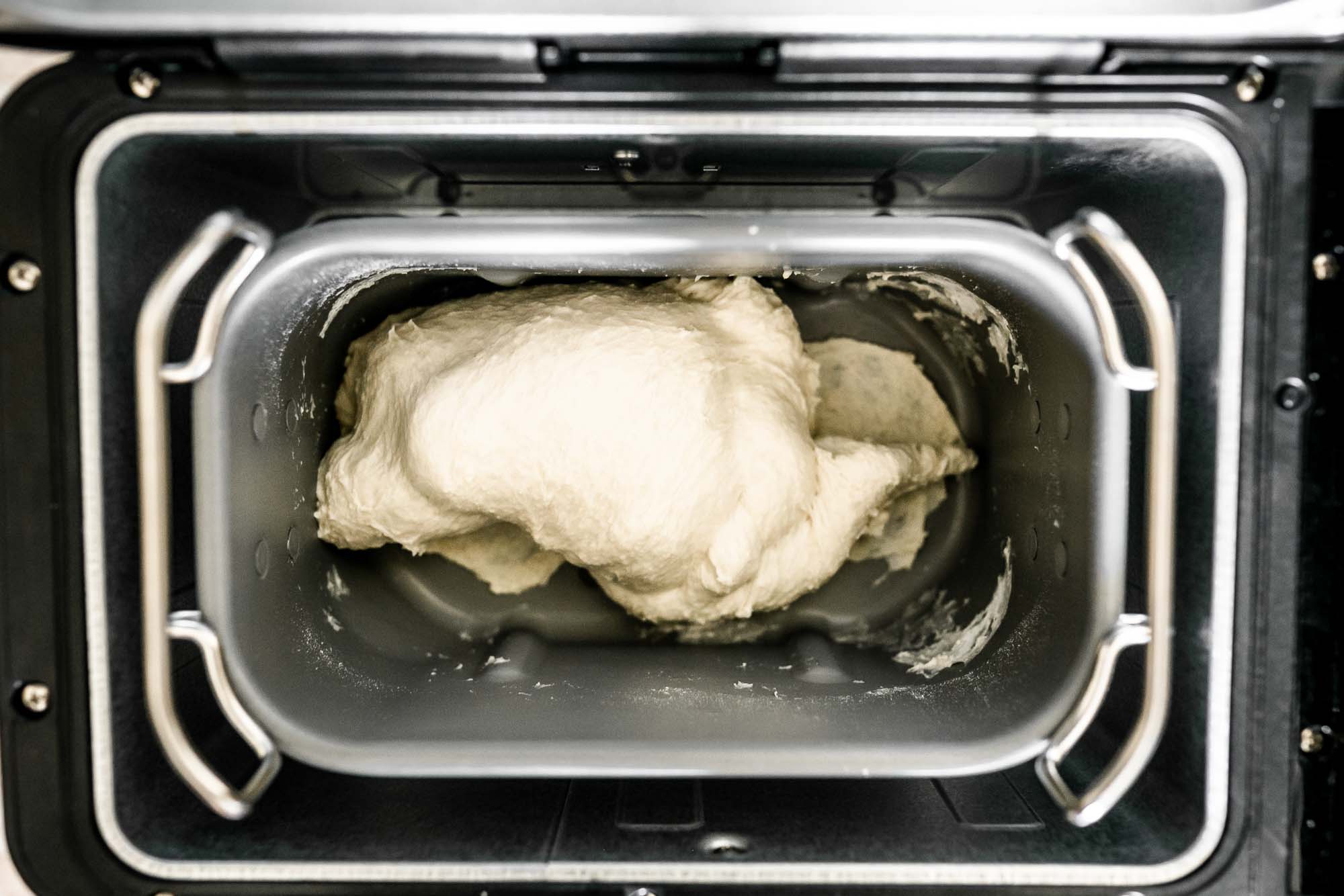
Bread machines are an obvious choice for beginners and novices, but many experienced bakers also find them useful for doing everything up until the baking, at which point they remove the dough from the machine to shape and bake in their own oven. This affords one Reddit user “the benefit of not having to clean your counters before and after making bread every single time.”
Not just for beginners
Believe it or not, Washington State University’s famous Bread Lab uses bread machines extensively for recipe testing. Even more, The King Arthur Blog (which calls Bread Lab their home), champions bread machines for making brioche bread. The high content of butter and eggs makes for a very sticky and notoriously difficult dough to make by hand. They ran an experiment between a bread machine and a stand mixer and posted the superior results of their beloved Zojirushi.
Specialized diets
Bread machines are invaluable for making this staple food tolerable for the estimated 15 million Americans with food allergies. Most of our finalists even have specific settings for gluten-free recipes. Easy Breadmaking for Special Diets provides bread recipes for the following diets:
- Gluten-free
- Milk- and lactose-free
- Egg-free
- Sugar-free
- Yeast-free
- Low-sodium
- Heart-healthy
- High-fiber
- Low-fiber
- Diabetic
- Low-carb
- Low-calorie
One gluten-intolerant commenter from the King Arthur Flour blog says, “GF bread in the grocery store is pretty pitiful and… is always frozen.” She finds great success with her bread machine, declaring her homemade bread, “by far better than anything that I could buy in a store.”
Cost-benefit of baking vs. buying?
The Spruce reports that the cost for materials to make a simple loaf of French bread is about $1.58. The cost of a store-bought loaf will run about $2.50 with more artisanal bread costing around $4.00-$5.00. With an inexpensive bread machine costing at least $50, you would recoup after at least 50 basic loaves or 17 artisanal.
For those really looking to pinch pennies, the /r/Frugal subreddit suggest finding used bread machines at the thrift store. You would, of course, runs the risk of bringing home a defective machine which would invariably complicate troubleshooting.
For your health
Other common motivators for home baking are health, satisfaction and joy. There were about 20 ingredients in the aforementioned store-bought loaves versus four to six in a homemade loaf. Don’t want “sodium stearoyl lactylate” inside that loaf of yours? How about the lowercase-challenged “DATEM”? They sound more like the ingredients to make an R2-D2 but nonetheless find themselves on the call sheet for Wonder bread — as in, “I wonder what I’m eating?”
For hobbyists, savings is less of a reason than the very satisfying process of creating food from scratch. In an interview with HuffPost, associate professor of psychological and brain sciences at Boston University, Donna Pincus, says, “baking has the benefit of allowing people creative expression.” The same article also links baking to self-expression, communication, mindfulness, altruism and stress relief.
The life-changing magic of freshly baked bread
The bread machine can be a serious tool for seasoned bakers and beginners alike. The benefits of using a bread machine outweigh the stigma that comes with labor-saving devices. Aside from cost-benefit and health reasons, at the basest level, it’s truly hard to beat the intoxicating smell and taste of a fresh loaf.
Kick off those low-carb shoes and fall in love with bread again. Let’s start with what to look for.
Important features to consider
Preprogram options: Most bread machines come with preset programs for all of the main options like Basic, Wheat, Dough, Cake, etc. If you are shopping specifically for gluten-free baking, T-fal – PF311E ActiBread replaces the standard options in favor of an exclusively gluten-free menu.
Bread loaf size: The average loaf size is a medium 1.5 lbs. For reference, the average sized store-bought loaf weighs 1 pound. Larger-capacity machines will bake up to 2.5-pound loaves.
Bread loaf shape: A common complaint about bread machines is the unfamiliar tall loaf shape, which could make for awkwardly large sandwiches that don’t fit in small sandwich bags or toasters. A simple solution is to cut it in half, but if this is a dealbreaker for you, consider the only “traditional” loaf option: Zojirushi – BB-PAC20.
Delay timer/keep warm: All of our finalists have this feature but vary in max time. This setting allows you to load up the machine the night prior and wake up to freshly baked bread. A word of warning: This feature should only be used with non-dairy recipes to avoid spoilage.
Variable crust color settings: This feature allows you to choose the “brownness” of your crust.
Size and weight: These machines can take up a lot of space. Alternatively, you can put your machine away after each use, but then you should consider its weight.

Viewing window: Being able to see whether the loaf has fallen flat earlier on in baking or rising could save waiting time. Panasonic – SD-YD250 was the only machine without a window, leaving us biting nails until the very end of the cycle.
Convection or conventional: Convection ovens use a fan to spread heat more efficiently. In the case of bread machines, this potentially means darker, crustier bread. Cuisinart – BMKR-400PC is the only convection option in our lineup, and indeed its results were more dark and crusty.
Fast bake option: If you need to sacrifice taste for time, the fast bake cycle does just that. This option is available for all of our finalists. Be careful to use the correct type of yeast!
How do bread machines work?
Basic function
A breadmaker does all the mixing, kneading and baking in one self-contained unit. For all it does, the technology is quite basic. There is an axle and motor which spins a removable kneading paddle and a heating element, which in turn heats up the loaf tin. An electronic interface controls the different programs available for different types of bread.
By controlling temperature for rising and proofing dough, the bread machine acts like a proving drawer or proofing box, bringing your dough to ideal temperatures for yeast activity (between 70 and 120 °F). This is an especially useful feature for those who live in very cold places.
Loaf tin
The loaf tin is the heart of the bread machine, where the magic happens. It’s a removable non-stick pan where your ingredients mix and mature into a fully-baked loaf. They all vary slightly in design and quality but work the same way. Inside, your robot kneading hands (the paddle) attach to the bottom. After proofing and baking, you remove the tin and shake out the finished loaf.

Convection or conventional?
The convection option for bread machines is not common. Out of our six finalists, only the Cuisinart – BMKR-400PC gives us the option. Essentially, convection ovens use a fan to spread heat more efficiently, resulting in quicker baking.
As the fan faces the side of the tin, Cuisinart’s machine doesn’t suffer from common convection-baking issues like drying out or undercooking the inside. However, it baked quicker and gave us a slightly darker and “crustier” crust. Some user reviews recommended using the Light crust color setting to achieve Medium results.
Next-level bread machine usage
By far, the most popular use of bread machines by hobbyists and advanced home bakers is the dough setting. Panasonic, Zojirushi and Cuisinart manuals show an impressive array of baked goods that are not in the shape of a bread machine tin. Cinnamon rolls, pizza, baguettes, dinner rolls, pretzels, bagels and braided masterpieces burst from bread baskets in full color! How do we go from our brown rectangles to these picturesque beauties?
The answer lies in the obscure “dough” setting. Once a home-baker starts Googling about bread recreationally, a world of possibilities opens up. /r/Breadit users share this tip like they are imparting sage wisdom unto a young padawan who only knows the first trick. Of course, mastery takes some practice.
We made pizza dough and all of a sudden, pre-made dough seemed laughable. Our bread-machine-dough pizza turned out just as great as any store-bought variety and was easier than going to the store. Pretty soon, recipes like dinner rolls just might become a weeknight staple: Simply interrupt the cycle to shape the prepared dough before returning it to the tin (or your own oven) for the final bake.
All about yeast
To understand more about baking, one must understand yeast. In 1868, the Fleischmann brothers developed the first commercial yeast made of grain, barley malt and brewer’s yeast. This dried yeast quickly replaced the more complicated use of natural starters and yeast which requires continuous maintenance and “feeding” like a live creature.
Today, the types and names of available yeast are confusing. We found some conflicting information, especially between “rapid”, “quick” and “instant” varieties. Ultimately though, there are three main types:
Active dry yeast: This is the “tortoise” of yeasts, likely what previous generations of home bakers are accustomed to. It rises the slowest, but longest. ADY is made of larger granules than other types and should be activated by dissolving with warm water (about 110°F) before use. This proofing process sheds off dead cells from high heat drying process to reach the living yeast. In their testing, King Arthur Flour blog reports that it has the most neutral taste while Cook’s Illustrated found its flavor to be “less clean,” potentially due to the dead cells.

Instant/highly active yeast (“Quick-rise” or “RapidRise”): The “hare” of yeasts reportedly work 50% faster than active dry yeast. The main difference is that it’s created using a much gentler heating process so that all of the granules remain active. Thus, it is more potent and requires fewer steps to use. It can be added directly to dry ingredients without “activating” with water. Its granules are smaller and contain enzymes and other additives to aid in quicker rise. The Kitchn reports you can also skip the first rise and go straight to shaping.
King Arthur Blog draws distinction between “Instant yeast” (SAF’s Saf-Instant) and “Highly active yeast” (Fleishmann’s RapidRise Instant Yeast, Red Star’s Quick Rise Instant Dry Yeast). The latter adds buzzy adjectives like, “quick” and “rapid,” in addition to “instant,” which is very confusing. The difference may be due to different amounts of activators added to help with faster rising. Their testing shows a difference in rising speed, but the finished results were neck and neck. KAF narrowly prefers what they consider “Instant yeast.”
Fresh, compressed or cake yeast: This is closest to Fleischmann’s nineteenth-century formulation and contains a higher water content than active and instant yeast. It is 100% alive and thus highly perishable, requires refrigeration and has a sensitive expiration date. It produces the most carbon dioxide during fermentation and requires no proofing.
Cook’s Illustrated prefers instant yeast for its, “potency of fresh yeast with the convenience of active dry.” In our testing, we too opted for an instant in SAF’s Saf-Instant yeast. However, the different types can be used interchangeably with some adjustment.
Our first lesson: Yeast shalt not touch salt
In our haste and excitement, we followed instructions and still came out with 3-inch-high loaves of bread. In our first pair of machine manuals, we saw no warning to keep the yeast away from the salt. In went the ingredients and perhaps after the longest 3.5 hours of our bread baking lives, complete and utter failure: two dense and deceptively-delicious-smelling failure piles.
Furious internet exploration revealed our fatal mistake. Salt kills yeast! This time we perused all of the bread machine manuals and saw different ways of preventing contact between the two. Some gave no mention, only directing to add ingredients in a certain order. Some gave a warning. A little understanding could have prevented this altogether. Now we know.
How we tested
Design
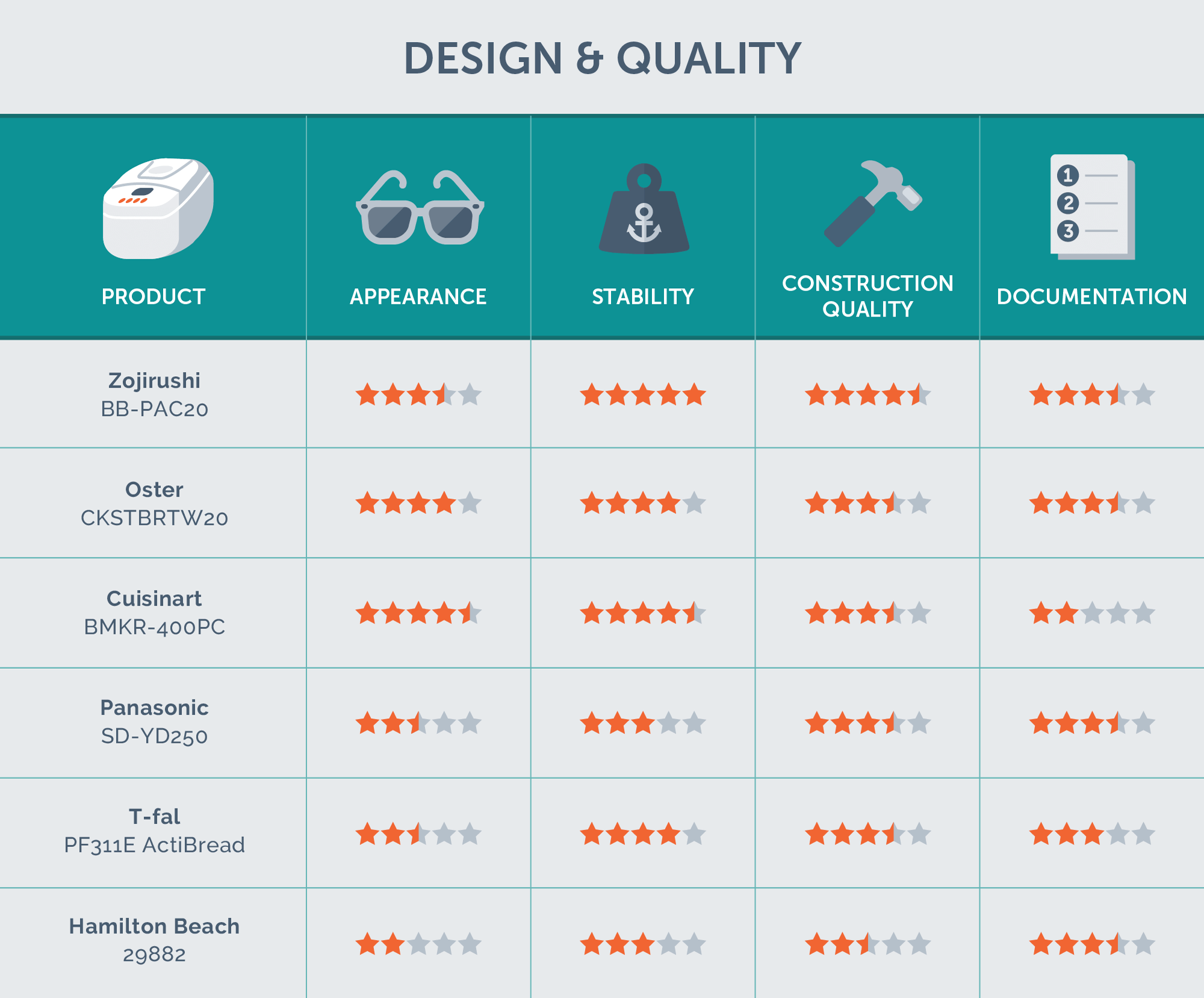
Each bread machine had its own character reflected in (or because of) design choices. Taking into consideration steps before, during and after engaging baking cycles, we graded each in the following criteria:
Countertop appeal: Beauty is in the eye of the beholder, but YBD staff thought there’s a margin of objectivity that is also influenced by function and branding. More simply, would we grow tired of seeing this every day in our kitchen?
Documentation: Instruction manuals and starter recipes were key in overall user experience. Our ranking rewarded easy-to-read guides and docked points for confusion.
Warranty: Buyer reviews often give firsthand accounts of warranty claim experiences. The responsiveness of each brand plays into their reputation for reliability and dependability. It is often clear if there are egregious issues within a product line and our warranty score represents an overall impression along with the duration of the warranty.
Stability: Because we found multiple reports of some machines creeping across the counter during the kneading phase, we paid close attention to unit stability.
Loaf pan design: Bread machine pans are generally very similar but vary in shape, size, weight and how they lock into the machine. Subtle differences or quirks may compound over time for better or for worse. Did the handle get in the way? Were there any sharp edges? Did weightiness make loaf removal more difficult?
Paddle design: The second-most-handled element after the pan is the paddle. We graded these based on material, shape and how they interlocked with the loaf pans.
Overall construction quality: Looking past the distraction of branding and packaging, we tried to get a sense of construction quality by examining materials, weight and the design of interlocking components. The last factor was especially important for the longevity of the machine.
Performance and operation

The performance ratings are the meat and potatoes of our reviewing process. Here, design and function meet. The proof, as they say, is in the bread pudding.
Programming and interface: The programming of a bread machine is implemented by a digital interface. We look at everything from button type and placement to screen legibility and ease of comprehension.

General ease of use: This is a comprehensive score that addresses every aspect from the point of view of a novice user from the first measure of flour to finished loaf.
Versatility: Bread machines are touted for their versatility, stretching the boundaries of what it means to be a “unitasker.” We count the number of preset programs and thumb through recommended recipes to arrive at this score.
Quietness: At the end of the day, the noise level of your bread machine may make all the difference. When we had three running at a time, the grades for this category quickly became clear. Depending on your intention and the location of your kitchen, your bread machine has the potential to become either a nuisance or an alarm clock.
Pan removal: Twist, pull or both? Removing a hot bread pan from the machine has a slight learning curve for each machine, varying in the process, ease and feel. Placement and swing of the handle make a difference as well.
Paddle removal and cleanup: We noticed some loaves came out of the tin more easily than others and can attribute that to paddle removal. Cleaning the paddles is easily the most arduous task of bread machine baking, apart from sweeping up flour and breadcrumbs. While the paddles rarely got stuck inside our loaves, this nonetheless prolonged the overall cleanup process, adding the task of surgical paddle removal.
The taste test

Finally, what we have all been waiting 3.5 hours for: the taste test! We baked each loaf nearly simultaneously, so we were able to do a side-by-side testing of bread right out of the oven and after a few hours of rest.
Taste: We used identical recipes in order to determine if the aforementioned criteria and price made any difference at all. Texture, crunch and balance of flavors round out the factors for this grade.
Look: Visual appeal always plays into the taste and so it will in our taste test as well. The look of a loaf always indicates the success (or fail) of a bake. Size also plays a role in texture and crumb.
Crumb: Otherwise known as “hole structure,” this is a useful visual indication of the process a loaf has undergone. Larger and varied holes mean that the dough was properly kneaded and aerated, and thus better puffed up for a delicate loaf.

Crust: The color of crust can be adjusted on our finalists, allowing choice of light, medium or dark. We chose medium for the purposes of testing and examined each loaf for evenness of color and relative darkness.
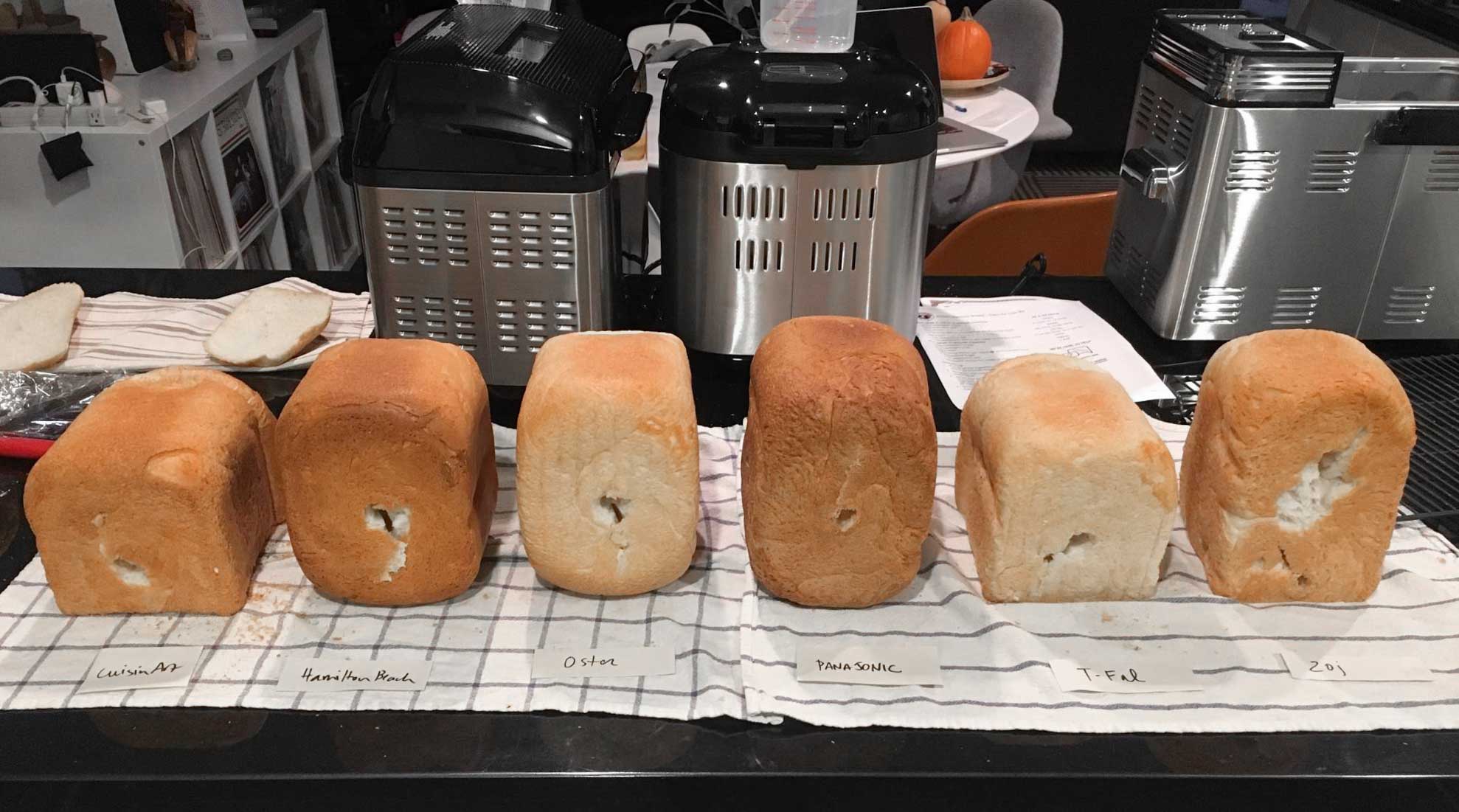
Paddle impression in bread: One of the main complaints of using bread machines is the unsightly impression left by the paddles of the bread machine. This compresses the bottom areas near the paddles as well, making it slightly denser than normal. We noticed that some machines made more of a mark while some consistently slid out cleanly.
Best overall: Zojirushi – BB-PAC20
It’s not a huge surprise that the Zojirushi – BB-PAC20, affectionately referred to as “Zo” by its fans, wins out. It is also the most expensive machine and it’s obvious why. The bread pan feels like it could survive a few lifetimes. The most unique feature, however, is the bread shape: those yearning for “traditional” regular height sandwiches will want to splurge on this workhorse of a machine.
Because of superior construction quality and thoughtful design, the Zo comes out on top in our design ranking. Its bread pan was the sturdiest by far, an important win since it is the most handled element of a bread machine. It earns a full score in stability as its horizontal orientation and weight keep it squarely in place during operation while others wiggle considerably.
When it comes to taste, it tied for first with the Panasonic. Both machines came up with consistent results across repeated bakes. The unique loaf-pan shape requires dual blades, adding a little bit of inconvenience as you have to clean two, but the consistent mixing may be worth it.
Bread scientists at Bread Lab at Washington University shamelessly endorse their Zo any time there is mention of bread machines. It has our vote of confidence as the bread machine most likely to outlast other machines.
The biggest drawback is that it wasn’t the quietest of the machines, producing substantial sound during kneading phases. Second is its larger footprint, size and weight which in a previous paragraph would describe its positive traits! There are trade-offs, so it depends on what your needs are. If you need a longstanding, well-engineered and well-made machine and have counter space to spare, Zojirushi – BB-PAC20 is the one.
Key takeaways:
- The Zojirushi – BB-PAC20 wins top scores in all three categories, but it comes at a cost. It is the most expensive bread machine but has the highest potential to outlast other finalists as it has the highest quality of construction.
- It is the only machine that produces a familiar size and shape loaf instead of the awkwardly tall “bread machine” look.
- This machine is most stable of the finalists, but it is also one of the heaviest and largest and will take up precious counter space.
Cost-effective pick: Oster – CKSTBRTW20
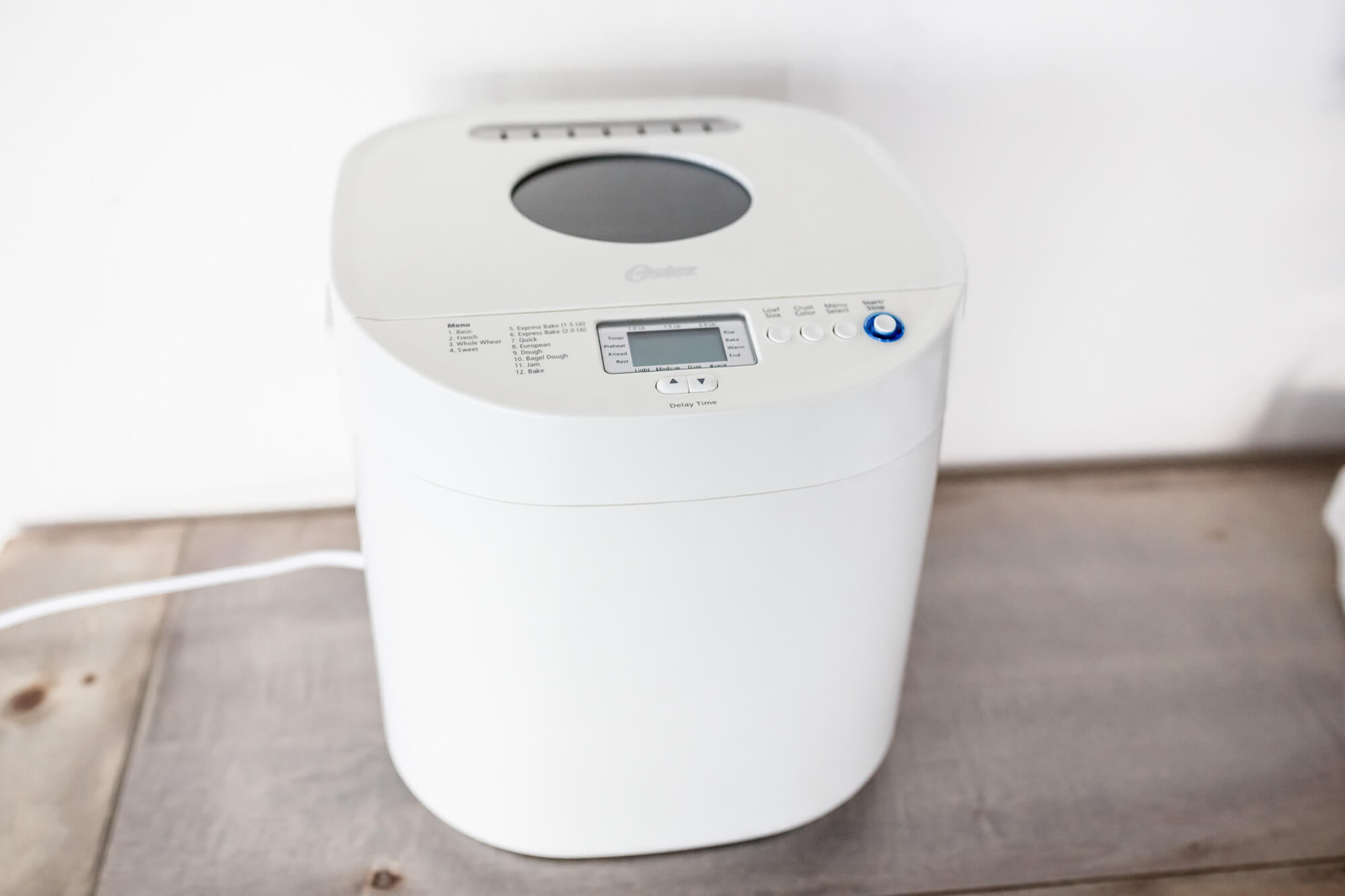
If the Zo won our minds, the Oster – CKSTBRTW20 won our hearts. Although much lighter in weight and smaller in size, the Oster delivered consistent loaves and scored high in taste.
Encased in an off-white plastic case, this machine is friendlier and less industrial looking than the Zo. Its lighter weight affords easier mobility (if you need to move it into storage after use), but invariably allows visible shaking during kneading. The tradeoff is that it is much quieter than the more stable Zojirushi and Panasonic. Surprisingly, our test scores show that despite its visible wobble, the Oster stayed in place just as well as the competition.
The controls and buttons on the Oster were simple and easy to access. A blue on light is as obvious and indicative as the use of the machine is itself. The lid is removable and easy to clean in the case of the occasional over-risen loaf. The bread pan is nothing to write home about, but it works just fine.
In general, the loaves coming out of this machine were nice, with light and airy texture. Most importantly, its slightly more developed flavor separated it from the other budget option, the Hamilton Beach. Although it was the cheapest finalist, it held up well against machines more than double its cost.
Key takeaways:
- The Oster – CKSTBRTW20 was the quietest machine we tested.
- As the least-expensive finalist, we were surprised to see it outperform the more expensive machines.
- The small weight, footprint and price make the Oster a great candidate for beginners and people in smaller kitchens.
- The small size and weight makes it ideal for storage or limited counter space.
Other finalists we tested
Panasonic – SD-YD250

The Panasonic – SD-YD250, with its high marks in taste, eluded us in the beginning. It looked as though the box came straight out of a time machine from the ‘90s. And it was loud. We can’t recommend this one for the noise-averse or light sleepers. It was so loud that we questioned whether or not it was fully working, but each time it answered with consistent top quality loaves.
We liked the look and feel of the paddle and loaf tin. As the third-most-costly machine, we expected it to have a high-quality build, and it does. The aesthetic design leaves a little to be desired; a tall, off-white rectangular box that says very little. The membrane-type buttons are resistant to flour and easy to wipe.
The instructions manuals are satisfactory, and the dedicated recipe book has a lot of nice pictures, but we can’t shake the blast-from-the-past feel we get from the overall branding. It’s an interesting contrast to see our freshly baked loaves living in the moment next to the vintage styling of the recipe book. It takes us out for a moment, but a bite into the bread takes us right back!
Cuisinart – BMKR-400PC
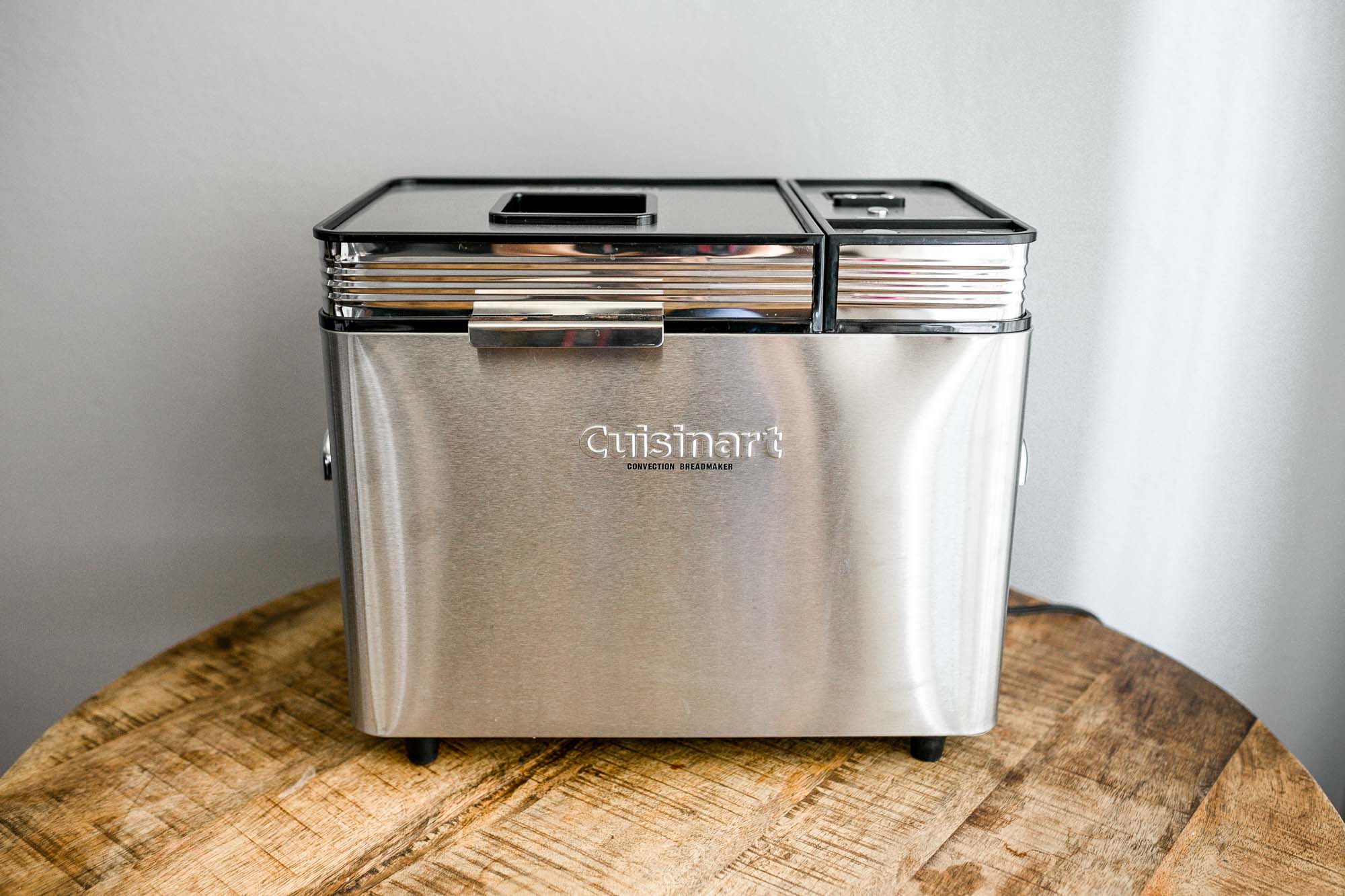
The Cuisinart – BMKR-400PC struck us as the stunner in the group, covered in sleek brushed metal with black and chrome highlights. The convection feature also sets it apart from most other bread machines: convection ovens use a fan to more efficiently spread heat, and the Cuisinart did yield lovely browned crusts, even on the medium crust setting.
A few user reviews reported mix results, some saying they ended up with burnt bread. Cook’s Illustrated reported that it overheated in their results so they left it out of testing. Our results were darker than the rest but were still delicious. The higher temperature resulted in a slightly thicker crust.
Costing almost $150 at the time of writing, this machine is the second most expensive. It certainly has a cool “industrial” look, but the construction quality left a bit to be desired. The metal casing is thinner than you would expect, certainly less robust than the Panasonic. The door and hinges just feel a little bit on the flimsy side, raising concern over how long this machine would last with heavy use.
If counter space is an issue, look elsewhere. Like the Zojirushi, the Cuisinart is a beast of a machine in dimensions, though not nearly as heavy as the former.
The nail in the coffin is its noise level, rated just above the broken-sounding Panasonic. Even with its good looks, we would be hard-pressed to justify shelling out the premium dough for this machine.
T-fal – PF311E ActiBread

The T-fal – PF311E Actibread puts all its money on being the bread machine for the gluten intolerant. This was a minor inconvenience as we failed a loaf trying to find an equivalent setting for “basic white” bread. Actibread gives us fifteen program settings and not a single one is “basic” of anything. We admire its radical commitment to this diet, although it proved slightly inconvenient for our testing purposes.
By flipping through the alternative recipe book, we found the closest thing to “basic white” was a setting for “gluten-free cake”. The results turned out pretty great, despite the experimental status.
The all-black-plastic look is rounded and “sporty.” Its long plastic gray buttons echo this style, and it operates just as expected. Its controls are simple, clear and easy to read. The digital readout is also easy to read and doesn’t aspire to be more than it is.
Other than its dedication to gluten-free bread, there is nothing all that different about this machine. We might recommend steering clear if you want to make conventional bread, if only to avoid the confusion of deciphering the correct setting. For the gluten intolerant and allergic, this would be a wonderful option.
Hamilton Beach – 29882

In our repeated testing, the Hamilton Beach – 29882 struggled to keep up with the rest. Its middling rank in design and performance gave out entirely after below-average taste test scores. We aren’t entirely certain why the bread wasn’t as good. It was serviceable, and many sandwiches were made. Taking a stab at reverse-engineering the bread, we’d guess that the kneading fell just short.
Or perhaps it was the off-gassing on the first round of loaves that was offputting. The manual had warned of this happening, instating doubt considering the other machines didn’t have the same problem. The plastic smell went away after the first loaf, but perhaps it had left an impression.
Our third guess is that the interior temperature of the machine might be off. One thing is for sure, this vaguely-sporty black plastic box left us in question and in doubt. For a task as complicated as bread making, choose a machine that inspires confidence.
The bottom line
There’s no denying the magical appeal of the alchemy that is bread making. With your machine, you can transform mostly-inert powders and liquids into this magical food form of love. For hobbyists, these romantic ideas swirl with the practical outcome of consistent, controlled results. While yes, you will save some money baking your own bread versus going to the store, there is an intangible benefit and that can’t be expressed better than “joy.” There’s something special about using your time and effort creating something from scratch to nourish yourself and others.
For demanding users who want customizable program options and a machine built like a tank, Zojirushi’s BB-PAC20 will bring you closer to home baking bliss. Its superior construction, consistent results and traditional-looking loaves are worth the investment, especially if you value product longevity.
For those who just want to dip their toes in, our runner-up and most cost-effective pick, Oster – CKSTBRTW20, takes (and bakes) the cake. Quiet, reliable and visually appealing, the Oster combines the consistency of more expensive machines with the best features of the latest bread makers.
More Reviews
Admetior - T837AH
The Best Dry Food Storage Containers
Progressive - Prepworks
KitchenAid - KSM150P
Breville - BHM800SIL
Toshiba - TL1-AC25CZA(BS)
Cuisinart - CBT-2000
The Best Meal Kit Delivery Services
HelloFresh
Verena Street - Mississippi Grogg
Black+Decker - Purifry


